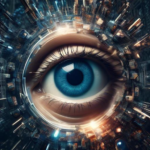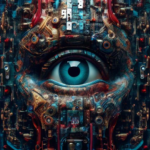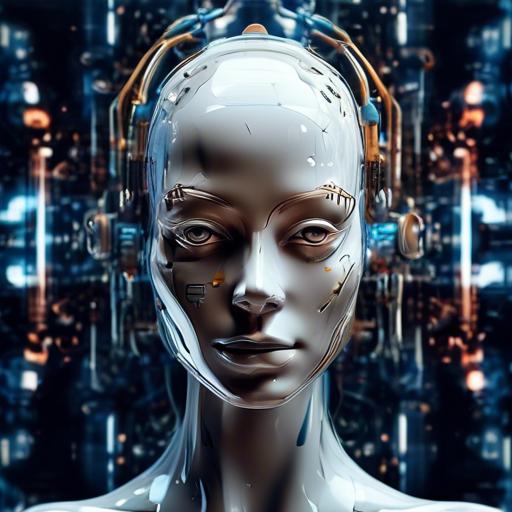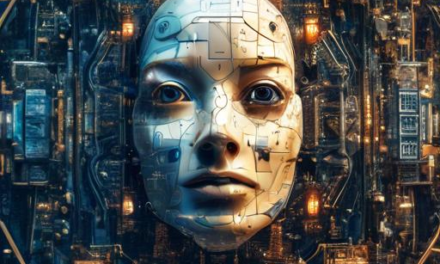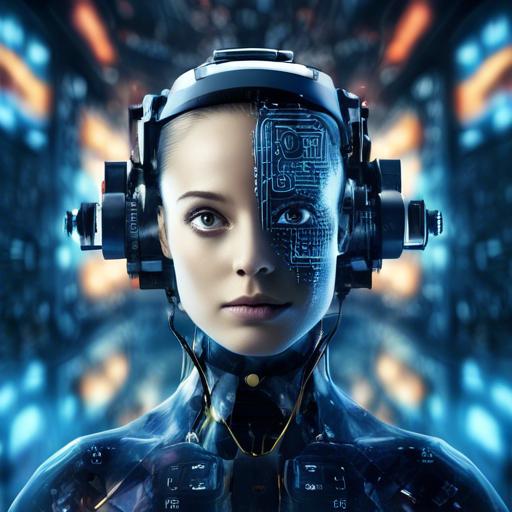In a world where creativity knows no bounds, the convergence of artificial intelligence and human ingenuity has birthed an extraordinary new frontier: AI-generated art. As pixelated masterpieces and algorithmically crafted sculptures compete on digital canvases, the spotlight turns to a question both profound and urgent: what role does ethics play in this brave new world? While technology races ahead, it is our collective responsibility to ensure that the soul of art remains intact, harmonious with the values we hold dear. Welcome to a journey through the maze of morality and machine, where in the heart of every byte and stroke, the essence of our humanity must persist. Join us as we explore the pivotal role of ethics in AI art competitions, weaving through the challenges, triumphs, and future possibilities that lie at the intersection of creation and conscience.
Table of Contents
- Navigating the Moral Landscape of AI-Created Art
- Creating Fair Competition: Balancing AI and Human Talent
- Defining Authenticity in the Age of AI Art
- Safeguarding Originality: Ethics and Copyright in AI Art
- Transparency and Trust: Building Credibility in AI Art Contests
- The Human Element: Ethical Considerations for Judges and Creators
- Innovation with Integrity: Setting Ethical Guidelines for AI Art
- Fostering Inclusivity: Addressing Bias and Diversity in AI Art
- Moving Forward: Recommendations for Ethical AI Art Competitions
- Future Outlook
Navigating the Moral Landscape of AI-Created Art
The integration of AI into the world of art competitions raises unprecedented ethical questions that challenge our traditional understanding of authorship, creativity, and value. Balancing innovation and integrity is crucial as we venture into this new frontier.
Defining Authorship and Originality
- Who truly claims authorship when an AI generates art?
- Do we value the human ingenuity of the programmer, the algorithm, or both?
- How do we ensure that AI art maintains a standard of originality and doesn’t merely replicate existing works?
These questions highlight the need to establish clear guidelines on the roles and recognitions within AI-created art. Evaluating the originality of such art demands a nuanced approach that considers the technical and creative input from humans.
Transparency in AI Art Creation
Another ethical dimension is the transparency of the AI creation process. Competitions must enforce transparency about how AI-generated artworks are produced. This includes:
- Detailing the datasets used for training the AI.
- Clarifying the human actions involved in the creative process.
Transparency not only maintains fairness in competitions but also educates audiences about the intertwining roles of humans and machines in modern art.
| Aspect | Key Considerations |
|---|---|
| Authorship | Clarifying credit among programmers and algorithms. |
| Originality | Ensuring AI art is distinct and non-derivative. |
| Transparency | Detailing the creation process and datasets used. |
| Fairness | Maintaining a level playing field between AI and traditional artists. |
Respecting Human Creativity
At the heart of these ethical considerations is a respect for human creativity. Competitions must create categories that differentiate between AI-assisted and human-only artworks to celebrate both technological advancements and traditional artistic skills. By recognizing the contributions of both AI and human artists, we foster an environment where innovation thrives without overshadowing the irreplaceable value of human creativity.
Creating Fair Competition: Balancing AI and Human Talent
Striking the right balance between AI-driven creativity and human talent is crucial in fostering an environment where both can thrive. When algorithms dominate art competitions, fears arise about undermining human artists. Ensuring fair competition begins with understanding the strengths and limitations of AI and human creativity.
Guidelines for Equitable Judging:
- Transparent Criteria: Establish clear and transparent criteria for judging entries, considering both technical prowess and artistic expression.
- Diverse Judging Panels: Include a mix of AI experts, human artists, and art critics to provide a well-rounded evaluation.
- Separate Categories: Consider creating distinct categories for AI-generated and human-created artworks.
Additionally, recognizing the collaborative potential between AI and human artists is essential. AI can serve as a tool or a muse, expanding the horizons of human creativity rather than replacing it. Embracing this collaborative spirit can lead to groundbreaking works that combine the best of both worlds.
Consider the following table to understand the differences and potential collaborations:
| Aspect | Human Artists | AI Algorithms | Collaboration |
|---|---|---|---|
| Creativity | Emotional and unique | Pattern-based | Enhanced inspiration |
| Technical Skill | Hand-crafted expertise | Precision and speed | Efficient execution |
| Originality | Innate ingenuity | Learned innovation | Hybrid innovation |
It’s about creating an ethical framework that values human intuition and AI’s analytical capabilities. This involves setting boundaries that prevent unfair advantages while simultaneously encouraging an evolution in art forms. By valuing both human and AI contributions, we build a more inclusive and dynamic artistic community.
Defining Authenticity in the Age of AI Art
In a world increasingly saturated with AI-generated art, the concept of authenticity demands fresh consideration. Traditionally, authenticity in art has been tied to the artist’s intention, technique, and personal touch. However, the rise of algorithms capable of producing intricate and emotive artwork calls for a widening of that definition.
If we are to redefine what it means to be genuine, we must consider the following factors:
- Authorship: Is it the machine or the programmer who deserves credit?
- Originality: Can an AI-generated piece ever be truly unique?
- Intention: Does the absence of human emotion dilute the impact of the artwork?
To navigate this complex landscape, AI art competitions need to establish ethical guidelines that ensure fairness and transparency. These might include:
- Clear labelling of AI-generated entries
- Criteria that account for the role of human input
- Transparency in the algorithms and data sets used
| Criteria | Requirement |
|---|---|
| Authorship | Credit both programmer and AI |
| Originality | Verify unique data sets |
| Intention | Evaluate emotional impact |
| Transparency | Disclose algorithms used |
As AI continues to evolve, so too must our understanding of authenticity in artistic expression. Rather than seeing AI as a threat to traditional art, we can view it as a new frontier that challenges us to redefine what is real, genuine, and ethically sound.
Safeguarding Originality: Ethics and Copyright in AI Art
In the rapidly evolving world of AI art competitions, the intersection of ethics and copyright poses fascinating and complex questions. The necessity for upholding originality is paramount, yet it often conflicts with the very nature of AI, which learns and creates based on existing works. **Navigating this landscape demands a commitment to ethical practices** that respect both the creators and the technology.
Modern AI tools can generate artworks that are intricate and compelling, sometimes indistinguishable from pieces created by humans. However, this raises the issue of copyright infringement. If an AI model is trained on copyrighted works without proper licensing or consideration, the resulting art may inadvertently reproduce elements of these pieces. It’s crucial for competition organizers to establish **clear guidelines** about dataset usage and to emphasize transparency in the creation process.
| Ethical Guidelines | Considerations |
|---|---|
| Source Material Licensing | Ensure that all datasets are composed of public domain works or properly licensed contributions. |
| Transparency in Creation | Require detailed documentation of the AI tool’s training process and source material. |
| Originality Verification | Implement robust plagiarism detection systems to maintain the integrity of competitions. |
Ethical AI art competitions must also consider the implications for human artists. By delineating clear boundaries around AI-generated and human-created art, organizers can foster a **supportive environment** that values both contributions. Encouraging collaborations between AI tools and human artists might pave the way for new, hybrid forms of artistry that respect the skills and efforts of each participant.
Moreover, there’s a need for continuous dialogue between technologists, artists, and legal experts to **adapt ethical practices** as technology evolves. Regularly updating competition rules to reflect the latest developments in AI and copyright law ensures that the art remains fresh yet authentic, and that artists—be they human or machine-assisted—are respected.
- Advocate for Fair Use: Educate participants about fair use principles and their importance in AI art.
- Foster Community Discussions: Create forums for artists to discuss ethical challenges and share best practices.
- Promote Ethical AI Development: Support AI developers who prioritize ethical considerations in their models.
Safeguarding originality in AI art means more than just preventing copyright infringements—it’s about valuing creativity and innovation while ensuring **fairness and respect** within the art community.
Transparency and Trust: Building Credibility in AI Art Contests
In an era of rapid technological evolution, **transparency** and **trust** serve as the bedrock of credibility in AI art contests. Contest organizers must embrace **open communication** and **clear guidelines** to reassure artists and audiences alike.
- **Clear Judging Criteria**: Make sure the criteria for evaluation are publicly available and understandable. This allows participants to better align their submissions with the contest’s expectations.
- **Disclosure of AI Role**: Be transparent about how AI is used in the creation process. Whether it’s a collaborative tool or the primary artist, participants should clearly state the extent of AI’s involvement.
- **Panel Transparency**: Reveal the credentials and backgrounds of the judges. Understanding who is evaluating their work can build participants’ trust in the process.
Trust also hinges on the perception of **fairness and integrity** within the competition. To uphold these principles, consider implementing:
| Feature | Benefit |
|---|---|
| **Blind Judging** | Eliminates bias, ensuring that each work is evaluated solely on its merit. |
| **Feedback Loop** | Provides participants with insights on their submissions, fostering growth and improvement. |
| **Public Voting** | Engages audiences and brings a layer of community involvement and validation. |
By embedding ethical practices such as **data privacy**, **intellectual property respect**, and **honesty about AI capabilities**, contests can further solidify their credibility. Participants should feel secure that their original works and personal data are protected.
Ultimately, **ethical transparency** isn’t just a set of rules—it’s a culture. When participants and audiences understand and trust the processes of an AI art contest, the competition can truly flourish as a respected and credible platform.
The Human Element: Ethical Considerations for Judges and Creators
As AI art competitions become more prevalent, ethical considerations take center stage for both judges and creators. These ethical frameworks ensure that the process remains fair, transparent, and respectful to all participants, including those whose works are influenced by or integrate AI technologies.
Judges’ Ethical Responsibilities
- Transparency: Judges must clearly communicate the criteria for evaluating submissions, demystifying the assessment process.
- Bias Avoidance: There must be a conscious effort to avoid biases towards or against AI-generated art. All submissions should be judged on their creative and technical merits.
- Confidentiality: The intellectual property and personal information of the contestants must be safeguarded to maintain trust and integrity.
Creators’ Ethical Responsibilities
- Disclosure: Artists should be transparent about the extent of AI involvement in their work. This includes disclosing the tools and algorithms used.
- Originality: Ensuring that their AI-generated pieces do not infringe on existing works or use datasets unethically sourced.
- Representation: Creators should avoid using AI in ways that perpetuate harmful stereotypes or misrepresent any group.
To further illuminate the ethical dynamics, let’s consider a comparison table for both judges and creators:
| Aspect | Judges | Creators |
|---|---|---|
| Transparency | Clarify judging criteria | Disclose AI involvement |
| Bias Avoidance | Evaluate by merit | Respect source integrity |
| Confidentiality | Protect personal info | Safeguard dataset sources |
The intersection of ethics, AI, and art is a dynamic landscape. Both judges and creators play pivotal roles in navigating it responsibly. By embedding ethical considerations into every step, they foster an environment that celebrates innovation while respecting the core values of artistic expression.
Innovation with Integrity: Setting Ethical Guidelines for AI Art
As AI art competitions gain popularity, the importance of setting ethical guidelines becomes ever more paramount. At the forefront of this frontier is the concept of “innovation with integrity.” This involves not only fostering creativity but also ensuring that the creative work aligns with moral and ethical standards. How do we, as a society and community of creators, set these guidelines in a manner that respects both the art and the artist?
To begin with, the use of AI in art should **respect the intellectual property rights** of original human-created works. This means that AI algorithms ought to be trained on datasets that don’t include copyrighted materials unless appropriate permissions have been obtained. Creators should feel confident that their work won’t be unfairly replicated or plagiarized by machine learning models.
Moreover, transparency serves as a cornerstone for ethical AI art. Participants and audiences should be aware of whether a piece was created entirely by AI, involved substantial AI assistance, or was minimally influenced by machine learning. Transparency helps in honoring the creative process and provides clarity on what constitutes human artistry versus machine-generated contributions.
**Key Transparency Guidelines:**
- Clearly label AI-generated works.
- Disclose the dataset sources used for training AI.
- Provide information on the level of AI involvement in the creation process.
Another crucial aspect to consider is **fairness and inclusivity**. AI should be utilized in a manner that promotes diversity and does not reinforce existing biases. Developers must strive to use balanced datasets that prevent the propagation of stereotypes and ensure a wide representation of different cultures, genders, and perspectives.
| Guideline | Objective |
|---|---|
| Intellectual Property Respect | Prevent misuse and plagiarism |
| Transparency in Creation | Ensure clear distinction between human and AI contributions |
| Fairness and Inclusivity | Promote balanced representation and prevent bias |
In this evolving landscape, ongoing dialogue between technologists, artists, and ethicists is indispensable. By continually revising and refining these ethical guidelines, we can safeguard the integrity of AI art competitions and celebrate innovation that honors both human creativity and ethical principles.
Fostering Inclusivity: Addressing Bias and Diversity in AI Art
One of the critical aspects of ethical AI art competitions is the commitment to fostering inclusivity by actively addressing bias and promoting diversity. The algorithms behind AI art are often trained on vast datasets, which can sometimes unintentionally reflect the biases inherent in those data sources. To combat this, it’s essential to **carefully curate training datasets** to ensure they represent a wide array of cultures, identities, and perspectives. Continuous scrutiny and updates to these datasets help mitigate bias and enable a more fair and inclusive creative landscape.
When it comes to **evaluation criteria**, the judges’ panel should also reflect diversity. A heterogeneous group of judges can offer a broader range of insights and expertise, thereby fostering a more balanced and fair assessment process. This diversity should encompass varied cultural backgrounds, artistic experiences, and cognitive perspectives, ensuring that no single viewpoint dominates the adjudication process.
Addressing bias goes beyond just equitable judging and extends to offering **support for underrepresented groups**. Initiatives such as mentorship programs, accessible learning resources, and scholarships for emerging artists from marginalized communities can create a more level playing field. These programs not only encourage participation but also empower individuals to make their unique mark in the AI art sphere.
Furthermore, transparency in the competition’s processes and criteria is paramount. By openly sharing **how AI models are built and evaluated**, alongside the methods used to mitigate bias, organizers can build trust within the community. This transparency should also involve feedback mechanisms where participants can voice their concerns or suggestions regarding inclusivity and fairness.
Here’s a simple outline to ensure inclusivity:
- Diverse Training Data: Regularly update datasets to reflect global diversity.
- Diverse Judges: Include judges from different backgrounds and experiences.
- Support Mechanisms: Provide resources and mentorship for marginalized groups.
- Transparency: Maintain open communication about processes and criteria.
Implementing these measures helps create a more inclusive environment that allows every artist to shine truly. By addressing bias and championing diversity, AI art competitions can inspire groundbreaking creativity that reflects the rich tapestry of human experience.
Moving Forward: Recommendations for Ethical AI Art Competitions
A forward-thinking approach to AI art competitions necessitates a robust ethical framework. These guidelines are essential for fostering creativity, maintaining fair competition, and safeguarding human and machine collaborations. By adopting these recommendations, we can navigate the complexities of AI art creation while ensuring integrity and inclusiveness.
- Transparency: Clearly disclose the involvement of AI in the creation process. This transparency allows judges and audiences to appreciate the unique blend of human ingenuity and machine learning.
- Originality: Encourage submissions that have a significant human touch. Crafting the concept, fine-tuning algorithms, and making aesthetic decisions should reflect the artist’s originality.
- Diversity: Promote diverse perspectives by welcoming artists from various backgrounds and ensuring accessible AI tools for all participants. Diversity enriches the art world and broadens the scope of creativity.
Enforcing ethical standards in judging criteria is another critical aspect. The evaluation process must be well-structured and transparent. Here is a sample framework that competitions might follow:
| Criteria | Description | Points |
|---|---|---|
| Creativity | Ingenuity and originality in concept and execution | 40 |
| Technical Skill | Proficiency in using AI tools and techniques | 30 |
| Ethical Use | Compliance with ethical guidelines and transparency | 20 |
| Impact | Emotional and aesthetic appeal to audiences | 10 |
Moreover, developing robust AI ethics training for artists and judges is vital. This training can cover essential topics like algorithmic fairness, bias mitigation, and the collaborative potential between humans and AI. Such educational initiatives help create a community that is both technically adept and ethically conscious.
Lastly, establishing a channel for feedback and continual revision of ethical guidelines ensures the dynamic nature of AI artistry is always respected. Encouraging participants to share their experiences and perspectives keeps the competition practices evolving and responsive. This iterative approach not only upholds ethical standards but also strengthens the integrity and acceptance of AI art in the broader cultural landscape.
Future Outlook
As we continue to push the boundaries of creativity and innovation in AI art competitions, it is crucial that we do so with a strong foundation of ethics. By upholding ethical standards, we not only ensure the fair treatment of artists and their work, but also promote a culture of respect and integrity within the competition. Let us strive to create a space where artists can thrive, pushing the limits of AI technology while upholding the values of fairness, transparency, and respect. Together, we can shape the future of AI art competitions for the better.




